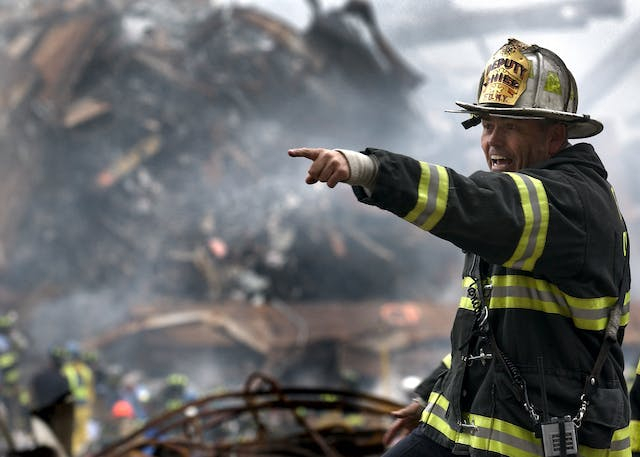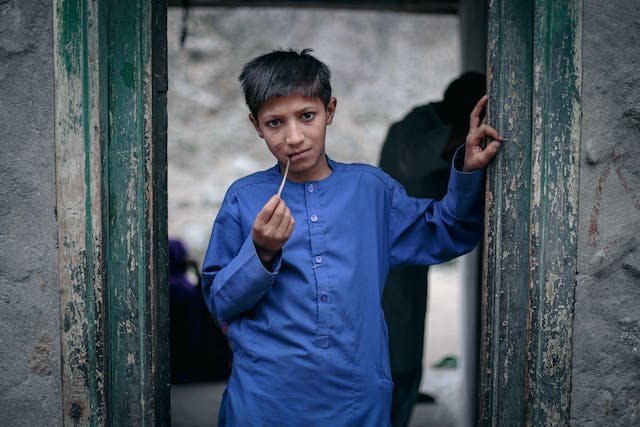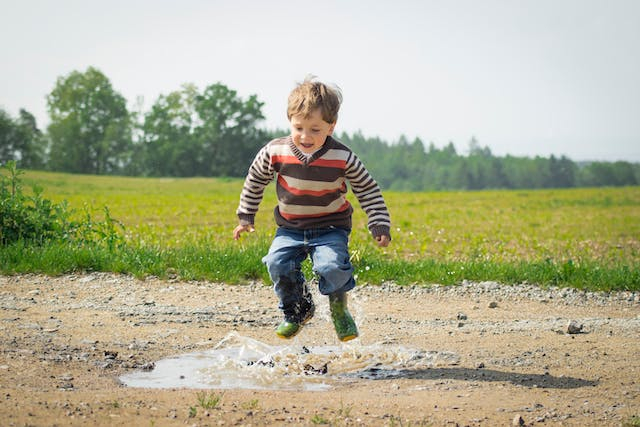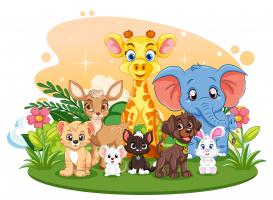Top 10 WH Questions For Kids
Exploring the world of questions can be a delightful journey for young minds. WH- questions, with their engaging nature, play a crucial role in speech ... read more...development, language skills, and overall communication for kids. In this article, Toplist present the Top 10 WH Questions tailored for little learners, fostering not just answers but the joy of expression and critical thinking.
-
The question "Who do you see in the picture?" is a standout WH question for children due to its multifaceted impact on their development. Firstly, it encourages keen observation as children scrutinize visual details to identify individuals, honing their cognitive skills. This process not only sharpens their perception but also cultivates a foundation for visual literacy.
Furthermore, the question acts as a catalyst for language development. By prompting children to name and describe the individuals, it expands their vocabulary and encourages expressive language use. The question engages not just their ability to recognize faces but also their capacity to articulate thoughts, fostering effective communication skills.
Moreover, the question facilitates critical thinking. Children must connect visual information with their existing knowledge, stimulating analytical reasoning and cognitive engagement. This not only aids in understanding the immediate context but also nurtures broader cognitive abilities.
Lastly, the question promotes interactive learning by initiating a dialogue. This interactive element not only strengthens social skills but also creates a positive and participatory learning environment. In essence, "Who do you see in the picture?" is a versatile and effective WH question, nurturing observation, language development, critical thinking, and interactive learning in a single, engaging query.

Photo by Tim Gouw via pexels 
Photo by Pixabay via pexels -
The question "Who won the race?" stands out as one of the best WH questions for children, offering a range of developmental benefits. Firstly, it sparks enthusiasm and engagement by tapping into a competitive element. Children naturally enjoy competition, and framing a question around a race capitalizes on this intrinsic motivation, making learning an enjoyable experience.
Secondly, this question enhances cognitive skills, specifically memory and attention. To answer, children must recall the details of the race and focus on the outcome. This mental exercise contributes to their memory development and concentration abilities, laying the groundwork for effective learning.
Moreover, the question fosters a sense of achievement. By identifying the winner, children experience a small victory in recalling and communicating information. This positive reinforcement builds confidence and a positive attitude towards learning.
Additionally, "Who won the race?" nurtures social skills through conversation and sharing. Children discuss and exchange information, promoting interactive learning and communication within a group setting.
In summary, this question is effective because it leverages innate interests, enhances cognitive functions, cultivates a sense of accomplishment, and fosters social interaction. It not only imparts knowledge but does so in a manner that aligns with children's natural inclinations, making it a powerful tool for both education and overall development.

Photo by Lukas Hartmann via pexels 
Photo by Pixabay via pexels -
The question "Who lives in your home?" is exceptionally valuable for children's development as it delves into various dimensions of their personal lives. Firstly, it encourages self-awareness and a sense of belonging. By prompting children to identify who shares their living space, the question fosters an understanding of familial relationships and reinforces a child's connection to their immediate environment.
Secondly, this question plays a crucial role in language development. Children not only name family members but also describe relationships, introducing vocabulary related to kinship. This linguistic expansion enhances their ability to express complex ideas, laying the groundwork for effective communication.
Moreover, the question nurtures social and emotional development. As children share information about their family, it provides insight into their emotional bonds and support systems. This sharing fosters a sense of security and strengthens interpersonal connections, contributing to positive emotional well-being.
Additionally, "Who lives in your home?" promotes inclusivity. It recognizes that families come in diverse structures, acknowledging and celebrating various family compositions. This inclusivity fosters a positive and supportive learning environment, promoting acceptance and understanding among peers.
In summary, the question is a powerful tool for cultivating self-awareness, language skills, emotional development, and an appreciation for diversity. It not only facilitates learning about one's immediate surroundings but also encourages a broader understanding of the different ways families can be structured.

Photo by Terje Sollie via pexels 
Photo by Kelly via pexels -
The question "Who fights fires?" serves as a remarkable WH question for children by seamlessly blending curiosity, knowledge acquisition, and community awareness. Firstly, it sparks interest by tapping into a common fascination, firefighters. Children are naturally curious about the world around them, and framing the question in this way engages their imagination and desire to explore the roles of community heroes.
Secondly, this question promotes early learning about community helpers, fostering a fundamental understanding of societal roles. By specifically addressing firefighting, it introduces children to the concept of emergency services, cultivating an appreciation for those who ensure safety and respond to crises.
Moreover, the question encourages language development. Children not only identify firefighters but may also express why they are essential, describing their duties and the equipment they use. This expands their vocabulary and enhances communication skills, laying the groundwork for effective expression.
Additionally, "Who fights fires?" instills a sense of civic responsibility. As children learn about the role of firefighters, they begin to grasp the interconnectedness of communities and the importance of collective efforts to ensure safety and well-being.
In summary, the question serves as an effective educational tool by stimulating curiosity, imparting knowledge about community helpers, fostering language development, and instilling a sense of civic awareness in children. It transforms learning into an engaging exploration of the world around them.

Photo by Pixabay via pexels 
Photo by Pixabay via pexels -
The question "Who is wearing blue?" is an exemplary WH question for children, seamlessly integrating observation, color recognition and language development. Firstly, it stimulates visual awareness as children scan their surroundings to identify the specific color, enhancing their observational skills and reinforcing color comprehension.
Secondly, the question encourages cognitive processing by prompting children to match the color blue with individuals. This mental exercise fosters critical thinking as they make connections between the question and their visual perceptions, contributing to cognitive development.
Moreover, the question serves as a valuable tool for language enrichment. Children not only identify the color but also articulate their observations, using language to communicate effectively. This process expands their vocabulary and reinforces sentence structure, laying a foundation for expressive language skills.
Additionally, "Who is wearing blue?" promotes social interaction and engagement. It invites children to actively participate in a group setting, sharing their observations and contributing to a collaborative learning environment. This interactive element not only enhances their social skills but also makes the learning experience enjoyable and participatory.
In summary, the question is effective because it integrates visual awareness, cognitive processing, language development, and social interaction. It transforms a simple inquiry about color into a comprehensive learning experience, fostering multiple aspects of a child's development.

Photo by Abdul Naser Sahebzada pexels 
Photo by Abdul Naser Sahebzada pexels -
The question "Who is the person who takes care of sick animals?" is an exceptional WH question for children as it serves as a gateway to empathy, knowledge acquisition, and an early understanding of professional roles. Firstly, it sparks curiosity by addressing a caregiver role, tapping into children's natural inclination towards animals and fostering an interest in compassionate care.
Secondly, the question introduces children to the concept of veterinary care, broadening their knowledge about professions associated with animal well-being. It lays the foundation for understanding the importance of specialized roles in society and the diverse ways people contribute to the welfare of animals.
Moreover, this question encourages language development. Children not only identify the person responsible for sick animals but may also express why such care is essential, describing the duties and responsibilities associated with veterinary professionals. This process enhances their vocabulary and reinforces effective communication skills.
Additionally, "Who is the person who takes care of sick animals?" cultivates empathy. By learning about the role of a veterinarian, children develop an understanding of the compassion and expertise required to nurture and heal animals, fostering a sense of empathy and responsibility towards the well-being of living beings.
In summary, the question stands out for its ability to stimulate curiosity, impart knowledge about professional roles, foster language development, and nurture empathy. It transforms learning into a meaningful exploration of the relationship between humans and animals, instilling values of care and compassion in children.

Photo by Pixabay via pexels 
Photo by Pixabay via pexels -
The question "Who do you play with at recess?" is a valuable WH question for children as it opens a window into their social interactions, emotional well-being, and the development of interpersonal skills. Firstly, it encourages self-reflection and expression. By prompting children to identify their recess playmates, the question invites them to articulate their social connections, fostering self-awareness and the ability to communicate about personal experiences.
Secondly, this question promotes social development. It sheds light on a child's social circle and the dynamics of their peer relationships, providing valuable insights into their social integration, cooperation, and teamwork during recreational activities. This understanding is crucial for educators, parents, and caregivers to support healthy social development.
Moreover, the question serves as a tool for identifying potential friendship challenges or facilitating discussions about inclusion. It encourages children to share and express their feelings, contributing to emotional intelligence and creating an opportunity for adults to provide guidance if needed.
Additionally, "Who do you play with at recess?" establishes a connection between school life and home conversations. Parents and caregivers can use this question to engage in meaningful discussions with children, reinforcing their involvement in the child's daily experiences and creating a supportive environment for open communication.

Photo by Luna Lovegood via pexels 
Photo by Luna Lovegood via pexels -
The question "Who is bouncing the ball?" emerges as an exemplary WH question for children, seamlessly integrating physical activity, observation, and language development. Firstly, it engages children in active observation and promotes physical awareness. By prompting them to identify the person bouncing the ball, the question stimulates both visual and motor skills, encouraging a connection between perception and physical actions.
Secondly, this question contributes significantly to language development. Children not only recognize and name the person engaged in the activity but also articulate their observations. This process involves the use of descriptive language, enriching their vocabulary and fostering expressive communication skills. They may describe the person's actions, adding depth to their verbal expressions.
Moreover, the question encourages a sense of participation and interactive learning. Children are prompted to actively engage with their environment, making the learning experience dynamic and enjoyable. It creates an opportunity for group interaction as children share their observations, promoting cooperative learning and social development.
Additionally, "Who is bouncing the ball?" opens avenues for creativity and imagination. Children may invent stories or scenarios based on the identified person, encouraging narrative skills and expanding their capacity for imaginative thinking.

Photo by cottonbro studio via pexels 
Photo by Mike González via pexels -
The question "Who do you call when you need help?" stands out as a crucial and effective WH question for children, addressing essential aspects of safety, communication, and social awareness. Firstly, it promotes a sense of security and preparedness. By encouraging children to identify who they would call in times of need, the question instills a sense of empowerment, helping them understand the importance of seeking assistance when faced with challenges.
Secondly, this question plays a pivotal role in teaching emergency preparedness. It guides children to recognize specific individuals or services, such as parents, caregivers, or emergency services, as reliable sources of help. This knowledge is foundational for fostering a safe and supportive environment.
Moreover, the question reinforces communication skills. Children not only name the people they would contact but also articulate the reasons for seeking help, honing their ability to express their needs effectively. This contributes to the development of assertiveness and clear communication.
Additionally, "Who do you call when you need help?" fosters social awareness. It emphasizes the importance of community and interpersonal connections by highlighting that help can come from trusted individuals, reinforcing the concept of a supportive network.

Photo by Andrea Piacquadio via pexels 
Photo by Andrea Piacquadio via pexels -
The question "Who helps keep us safe?" stands as an exemplary WH question for children, addressing foundational concepts of security, community, and societal roles. Firstly, it fosters an understanding of collective safety. By prompting children to identify those who contribute to their well being, the question encourages a sense of shared responsibility and emphasizes the importance of cooperation within a community.
Secondly, the question introduces children to the concept of everyday heroes. It allows them to recognize and appreciate the roles of various individuals, such as parents, teachers, police officers, and firefighters – who actively work to ensure the safety of others. This broadens their awareness of the diverse contributions that different professions make to society.
Moreover, the question promotes gratitude and respect. As children reflect on those who help keep them safe, it nurtures an appreciation for the efforts of individuals in their community. This acknowledgment contributes to the development of positive values and a sense of respect for those who serve and protect.
Additionally, "Who helps keep us safe?" encourages open dialogue. It provides an opportunity for teachers, parents, or caregivers to engage in conversations with children, furthering their understanding of safety measures and reinforcing the importance of trusting relationships within their support network.
In summary, the question serves as a comprehensive tool for instilling a sense of community responsibility, introducing the concept of everyday heroes, nurturing gratitude and respect, and fostering open communication about safety. It encapsulates essential lessons that contribute to a child's holistic development and understanding of the world around them.

Photo by Samuel Wölfl via pexels 
Photo by Samuel Wölfl via pexels
































